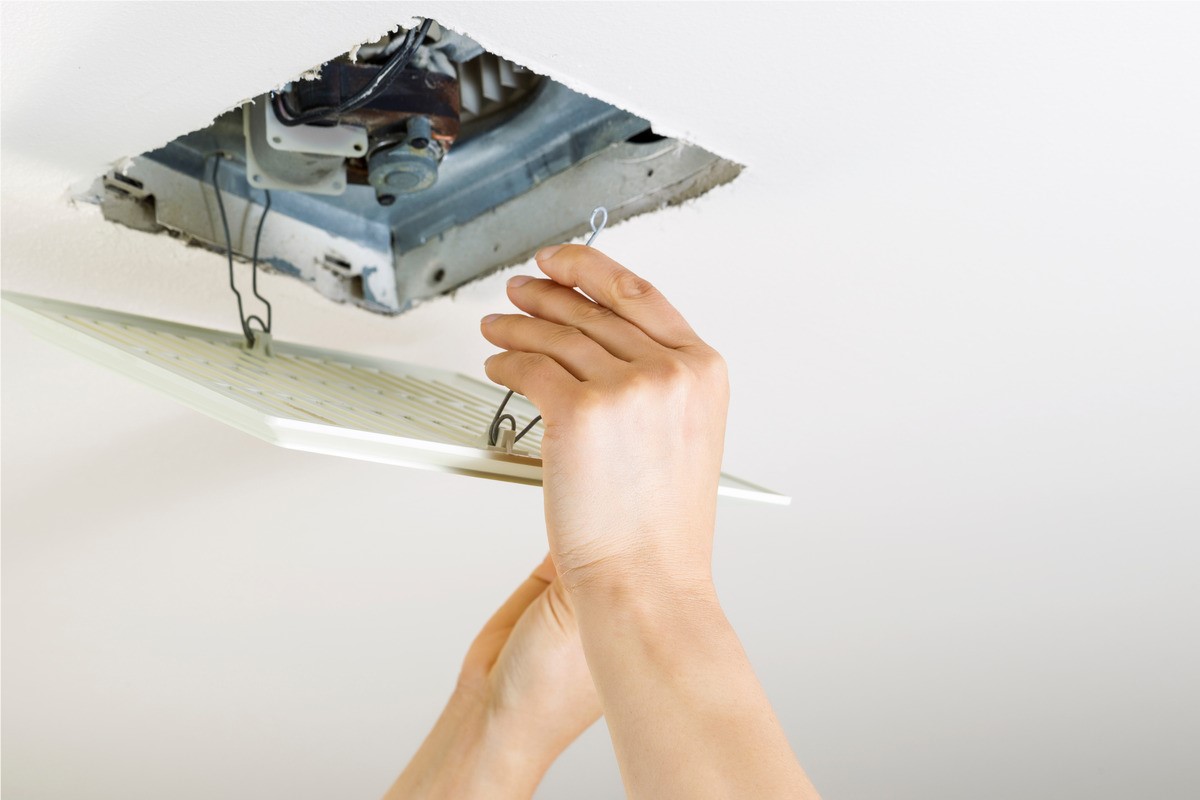
Here at Music City, we've seen our fair share of bathroom exhaust challenges – it's a common issue that many homeowners face. We get it, and we're here to help you navigate through it. Some of the problems we tackle stem from myths about attic ventilation and the tricky path that hot, humid bathroom air needs to take. Trust us; ignoring these issues can lead to major headaches down the road.
In today's blog post, we want to share some insights with you. Music City is here to guide you on the right path for exhaust fan ventilation placement and, just as importantly, where you absolutely shouldn't vent. Let's dive into the nitty-gritty of proper ventilation to keep your home in tip-top shape.
Top Reasons Not to Vent Your Bathroom into The Attic
It is crucial to keep in mind that directing your bathroom roof vent into the attic is a major no-no. The attic functions by expelling warm, moist air and drawing in cooler air. However, introducing hot and humid air into this space creates an environment that's perfect for trapping excessive moisture.
Now, why is excess moisture such a deal-breaker? Well, it essentially rolls out the red carpet for mold and mildew to establish their presence. If you're fortunate, dealing with mold removal might be the only task needed for your crawl space. However, in more serious cases, it could lead to issues like roof leaks, the deterioration of your roof sheathing, and even pose a health risk.
Your sheathing, typically crafted from plywood or OSB, becomes susceptible to delamination, buckling, and rot when exposed to prolonged high moisture levels. In a nutshell, rerouting your bathroom vent into the attic is not a recommended move. It's a recipe for potential problems that can jeopardize both your home's integrity and your well-being.
So, where Should I Vent My Bathroom Exhaust Fan?
Venting your bathroom exhaust fan directly through the roof is extremely crucial for the optimal performance of your home. It plays a crucial role in efficiently eliminating excess moisture from your attic space, a factor that cannot be emphasized enough.
To accomplish this, you'll have to redirect or install duct pipes from the fan, guiding them towards an exterior vent on the roof. This not only ensures efficient ventilation but also establishes a designated exit for moisture, keeping it from lingering in your attic. However, it's important to highlight that while proper exhaust fan ventilation is a significant step, it's not the sole solution.
Harmonizing Noise Levels in Exhaust Fans
Let's face it – when it comes to bathroom time, we all yearn for a serene experience. Maybe you reach for your favorite sports magazine or scroll through your phone; the goal is peace. However, that tranquility can be abruptly disrupted when the exhaust fan roars to life, sounding like an airplane gearing up for takeoff. The bathroom is your escape from noise, not an addition to it. But fear not – we've got some handy tips!
Bathroom exhaust fans are measured in "sones," a unit that quantifies how the human ear perceives sound. For reference, a soft hum akin to a refrigerator is typically rated at one sone. Here's the interesting part: each additional sone doubles the sound level, making two sones twice the volume.
To ensure a peaceful bathroom experience, opt for a fan with a sone rating of two or below. Fans rated at three or four sones might introduce more noticeable white noise. It's best to steer clear of fans rated at five or higher for a quieter ambiance. After all, the bathroom should be your sanctuary, not a concert hall, we will save that for our favorite artists!
How To Properly Size a Bathroom Exhaust Fan
Choosing the ideal bathroom exhaust fan for your home is akin to finding the perfect pair of shoes – it's all about getting the right size. In this scenario, the size of your bathroom takes center stage, determining how effectively your exhaust fan can bid farewell to hot and humid air.
For peak performance, aim for a minimum of 1 CFM (cubic foot per minute) of ventilation for every square foot of your bathroom. Size matters – an undersized fan won't effectively whisk away that steamy air. Ensure you've got the right match.
For smaller spaces, a minimum of 50 CFM will suffice. However, if you're dealing with a spacious bathroom, consider teaming up with multiple exhaust fans for a dynamic ventilation duo. It's all about pinpointing that sweet spot to keep your bathroom feeling fresh and fabulous.
Ensure Proper Ventilation for Your Bathroom
If you have concerns about the effectiveness of your ventilation or duct system, don't hesitate to reach out to our experienced professionals. Ignoring potential issues can escalate a simple cleanup into a major roof replacement, resulting in substantial costs.
Why take the risk? With over 10vyears of experience, you can trust our expertise to identify and address any ventilation concerns promptly. What's better than a roof estimate? A free roof estimate! Give us a call today to schedule your free inspection and gain peace of mind for your home.
Tags
Subscribe to Music City Roofers's Blog




Comments